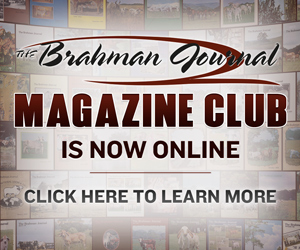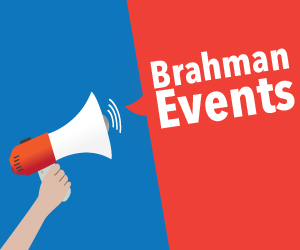Big thanks to the ABBA for supplying the raw data that made this edition possible! Look to the March edition for the listing of the Polled bulls and females which have the most Register of Renown points.
Welcome to the February 2023 special polled edition of the magazine! Polled Brahmans are taking the cattle world by storm. It is not uncommon to see them in the show ring and pastures across the globe and particularly here in the United States and Australia.
Many breeders have dedicated hours researching pedigrees and searching herds for polled cattle that put together all the right pieces – a beautiful smooth polled or scurred head as well as a beefy, functional phenotype.
With the modern world moving at a rapid pace and consumers growing more aware of the food chain and beef production practices, it is possible that more stress will be placed on breeders to breed for polled cattle as they don’t have to be dehorned, which some groups find to be an inhumane process.
According to Joseph Stookey, an associate professor at the Western College of Veterinary Medicine, University of Saskatchewan, in one breeding season a producer can take a herd of horned cows and breed them to a polled bull (homozygous for the polled condition) and have an entire polled calf crop. That is because, in cattle, horns are inherited as an autosomal recessive gene, polledness being dominant.
Homozygous for the polled condition refers to a bull carrying two copies of the polled gene. Because the polled condition is a dominant trait, some polled bulls can be heterozygous and carry one copy of the polled gene and one copy of the horned gene. Heterozygous polled bulls will, on average, pass on the horned gene to half of their progeny. If horned cows are mated to a polled bull with the heterozygous condition, on average we would expect 50% of the calves to be horned.
Scurs, which are horn-like, are controlled by a different set of genes and can occur on polled bulls. In a recent article about the genetics of horned, polled and scurred cattle in Beef-Cattle by Darrh Bullock, University of Kentucky, discusses that horn growth would make it impossible for scurs to develop at the same spot but horned animals can carry the gene for scurs.
Unlike the poll/horn trait, scurs is not a simple recessive trait and is not completely understood! It has been hypothesized that scurs is a separate gene to the poll/horn gene on Chromosome 19, but interacts with the poll/horn gene, and that gender also has a possible influence on this trait.
The article also explains that the condition that is obvious is that horned cattle (pp) cannot have the scur phenotype. If cattle have the genotype for the horned condition (pp) they will always be horned. For cattle to develop scurs, it must be a horn allele carrier (Pp) and have some other unknown genetic influence, realizing that male calves will tend to develop scurs at a higher rate than females.
For cattle to be smooth polled it must be either homozygous (PP); or heterozygous polled (Pp) without the unknown genetic influence that allows scurs. Since this edition showcases breeders with the highest number of polled registrations, a commentary section spotlighting the thoughts and programs of breeders around the globe, and a ranking of the Polled bulls and females who have the most registered progeny within a certain time frame, it really is a deep delve into what is going on in the polled sector of the Brahman breed.














